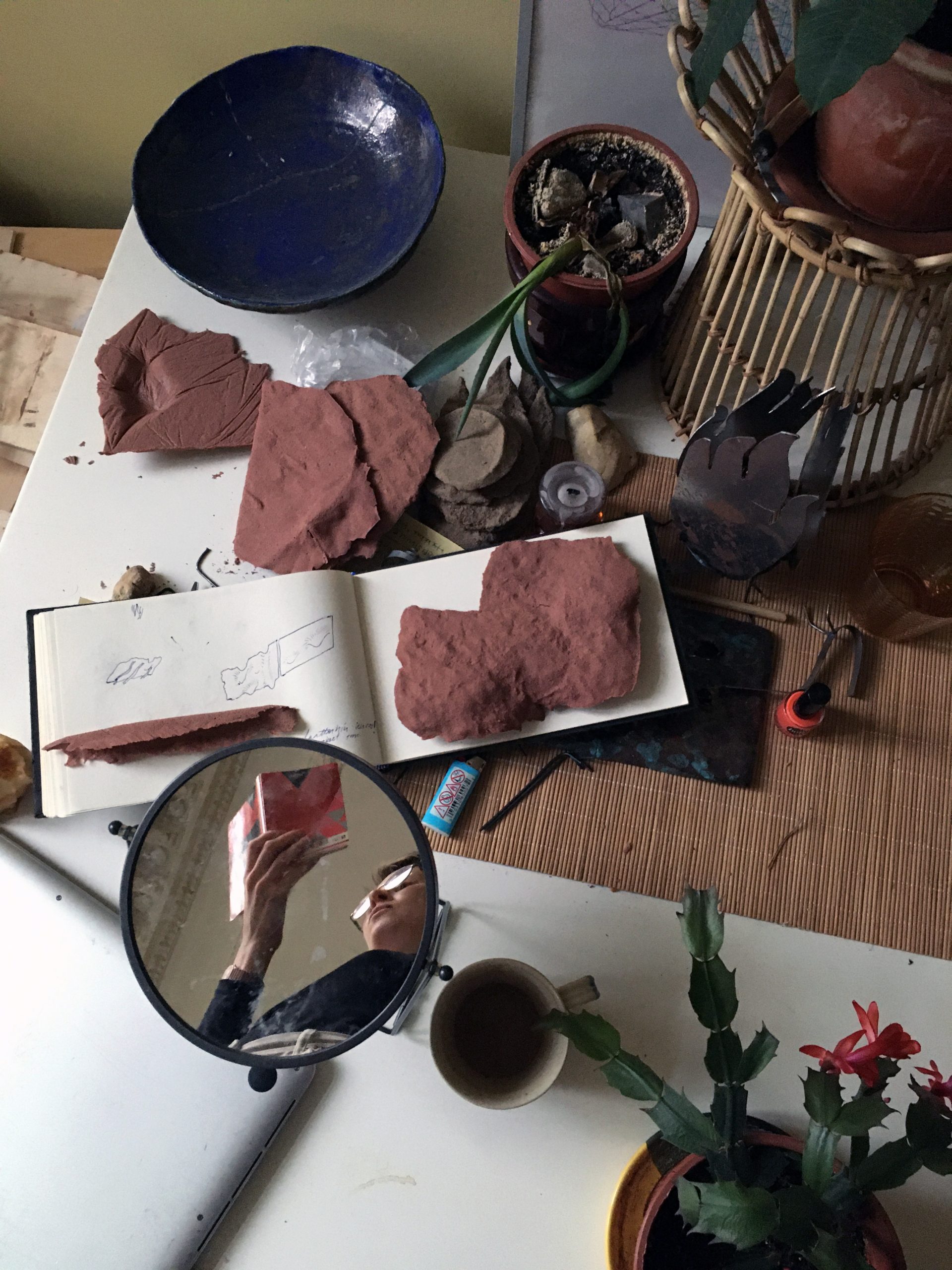Sallamari Rantala is a visual artist working in North Finland and Lithuania. Rantala’s practice uses experimental field research to gather materials, knowledges and meanings. Her work is mainly focused on questions of how people learn and share knowledge of the material reality. On the background there is an observation, that encounters and ways of producing knowledge are often very humanistic and extractivist. In order to challenge herself and the situation, she collects and forms stories and materials of the terrain into visual and textual form, playing with a merge of different ways of (un)knowing. Sallamari Rantala’s artworks from series “Exhausted Fire Between Spirals” has been shown in the group exhibition “Thickeners” (curated by Adomas Narkevičius) at project space “Editorial”. Because of that, we share Rantala’s literary recomandations.
Energy & Experience (2013) by A. Salminen and T. Vaden
When this book came out, it opened me a yearned passage to think and observe material reality and material blind spots of “our” culture. The authors contemplate how fossil fuels entered the culture, how they turned into an abstraction, and their consumption became something neutral. This is a philosophical book about concrete, material energies and how they affect experience. For me as an artist it is important to take into consideration the materiality of art making and e.g. art institutions as an ethical and diversity-promoting issue. In general we still have a rather bad idea what the material reality really means and what kind of materialities human and nonhuman lives are based on.
This books is available online via this link: http://www.mcmprime.com/files/Energy-and-Experience.pdf
From the greyness of forest (2021) by L. V. Maa
Lately I have been inspired by texts of this writer and the one mentioned here is unfortunately the only one translated to my knowledge. The writer is a biologist and does mapping of endangered species in northern finnish mires and forests. In this text lyricality, science and forest activism are in such a great composition which touches me. To me her language has something sincere about how describing reality and its experience is unfit to be done with clarity, even when one is a professional on nature sciences. With her writing I can think of the problematics of how to talk and know about “nature”. One can sense months of field work around mires and how it affects the being.
This books is available online via this link: https://mustarinda.fi/magazine/huoltaa-maintain/from-the-greyness-of-forests
Mind in the Cave (2002) by D. Lewis-Williams
Mind in the Cave by D. Lewis-Williams (2002) considers material and mind in a non-dualistic way and studies its issue through material evidence using archeological findings. I find it intriguing how this book discusses consciousness as something historically situated and how human mind has potential for its various states but we are directed to use certain ones. Reading this book I have been trying to think away from the enlightenment and reflect twenty first century consciousness, mainly to grasp how otherwise I could be with “nature” or matter.
How Things Shape the Mind (2013) by L. Malafouris
Another similar book from an archeological point of view is How Things Shape the Mind by L. Malafouris (2013) which studies consciousness and matter as something entangled: “brains, bodies and things conflate, mutually catalysing and constituting one another”. These matter-confessing books make me inspired to observe often stagnant perceived matter ever deeper, find histories and happenings marked in shapes, colors and surfaces.

I would also like to mention two types of texts I often find myself reading. Thank you to all their authors!
Another text type I want to mention and recommend is “nature stories”. I often find self-published or mini-publishing-house books/leaflets from the corners of regional libraries which are in a way or another describing and sharing author’s experiences in nature. This undefined genre delights and inspires me. I maybe read them with some sort of a hobbyist anthropological approach, so the conventions of nature language i.e. romanticisms, dichotomies, objectifications etc. appear as sincere reflections of the histories of our relationships with nature. Nonetheless, I refuse to distance myself into a plain observer, rather, I think I am one of those writers.
I like to read regional books about species, like about mushrooms or birds or lichen. I enjoy the language which can be seen as very specifically scientific but from another point of view – imaginative. How to describe a species’ features, how they move or make sounds, how to call a tree in its different stages of life. Many of these are hard to translate and human language often starts to look rather humorous. I also just love to learn to recognize species and phenomenon.
–
Main picture: Salalmari Rantala’s photo from personal archive.
Exhibition picture: Ugnius Gelguda.


